

Sony WH-1000XM3: Silence in the noise. And jingles
Sony has done it and knocked the current leader in active noise-cancelling headphones off the throne. The WH-1000XM3 does a lot of things right and one thing above all: a lot of fun. A travelogue.
The Sony WH-1000XM3 don't look like much. Black, simple, rather small. But that's not what they want or should be. Because the wireless headphones are not there to make a bold fashion statement, but do one thing above all else: transport music into your ear.
The matter of music in your ear is a little more complex than just the one sentence, because headphones don't cost almost 400 euros just because they sound good. Sure, they are available, but Sony wants to create a device that can do more and does more. A short test of a pre-production model on a plane has shown this: The noise cancelling works. But there wasn't enough time for more. After more than a month of daily use, however, it became clear what the WH-1000XM3 is capable of.
Four hours of jet propulsion
The test environment for noise cancelling is once again an aeroplane. But instead of 45 minutes, the flight lasts a good four hours. This shows what noise cancellation can do. Music is stored on the smartphone, a Huawei P20 Pro. The Bluetooth connection is established and I deliberately ignore the information about "life jackets under the seat". I've flown so often in the past few years, I could give the speech myself.
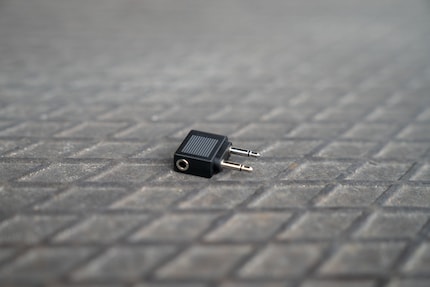
I suddenly realise that I might no longer have Bluetooth when my smartphone is in flight mode. So I have to use the cable that Sony provides in the practical case. There is also a USB-C cable to charge the headphones, but I haven't needed it yet. A smartphone charger will also do. The splitter, which you can certainly do something with, is similar. Really, what's it good for? Editor Livia Gamper suspects that it's "for the thing in the aeroplane". Somehow this is supposed to be something relevant in old aeroplanes. From recent experience, however, I can say that you don't need it on the plane. Probably a relic from the old days. Nice of Sony to include it, but still.
How does this thing sound?
The main question is the sound. How do the headphones, which I'll just call the Sennheiser killer, sound? Good. But this statement comes with a big "but", because the WH1000-XM3 are smart headphones. This means that the headphones work a lot with software and therefore have many small levers and switches that are designed to maximise your listening pleasure.
The headphones themselves are smart.
The headphones themselves are quite dumb, because Sony does the only right thing and lets the intelligence of a smartphone think for the headphones. The M3 itself only performs. The app that provides the headphones with intelligence is simply called "Headphones Connect" (Android and Apple iOS), under Android simply called "Headphones" in the menu.
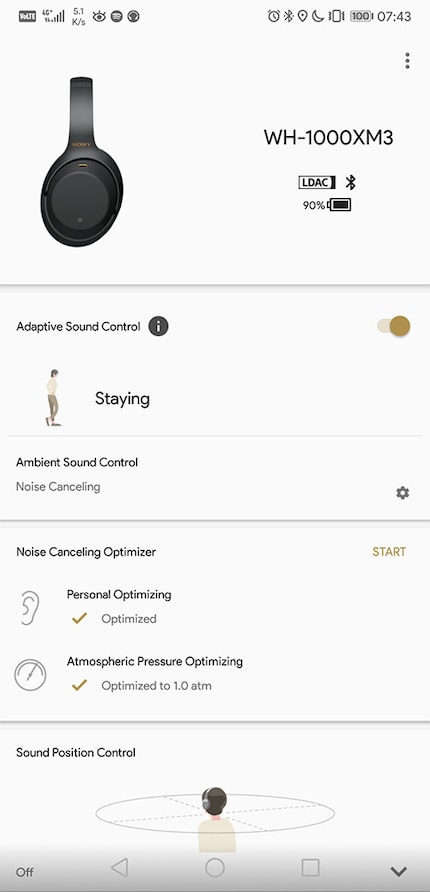
The app allows you to make settings that adapt the sound to your ear. In addition to an automatic sound optimisation process in which the headphones play sounds into your ear and then adjust themselves so that the sound is right for you. You can then adjust the details in the app.
Eben: Sounds good, but can mean a bit of work.
The crux with the brain
But intelligence can be annoying. Because it's always thinking. Always. Never stops. This can be particularly annoying in the Adaptive Sound Control menu item. This is because Adaptive Sound Control uses the sensors on your smartphone and headphones to determine how much you are moving and automatically and continuously adjusts the sound and noise cancelling.
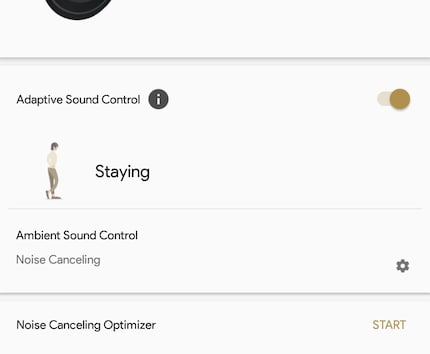
Every time this happens, the music stops, a jingle sounds and the music resumes after a second or two. At the airport, when you're walking, standing or sitting, it's extremely annoying. I'm not immune to the jingle in the office either. The app has a preset for practically every body position and every movement. Less would definitely have been more here. Or without the pause, that would be okay. Because I don't want to notice the intelligence, especially not with an annoying jingle.
However, it's worth taking a look at the equaliser settings. Because although the auto sound is quite good, I strongly recommend tweaking the settings yourself. Here's a small caveat: the ear is a fine thing and so everything that comes next should be read with a certain degree of scepticism. Just because I think a setting is good and beautiful doesn't mean that it will suit you. Because your ear is not mine, your taste in music is not mine.
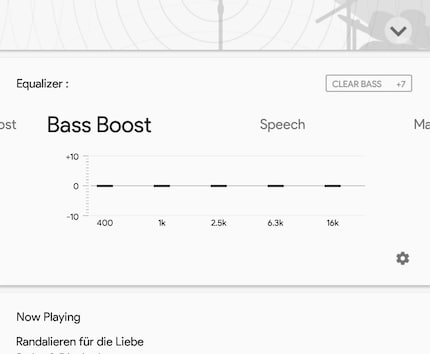
I like the bass boost. Because I like nice, warm bass. People often tell me that I like to overdrive the bass. That's fine by me, but I just like it when it has a nice thump. Maybe the treble gets bogged down for me, but I've been prioritising bass for ages. That's why the Bass Boost setting is made for me and my music.
But it's not just the settings where Sony does a lot for you. My favourite feature is one that Sony shouldn't even have, because they pride themselves on another feature. If you place the palm of your hand on the right ear cup, the music is turned down and the noise cancelling is switched off. I don't like this feature. I prefer to quickly press pause and remove the headphones from my ear.
Super, on the other hand, is the following: So I pressed pause, told the flight attendant that I was having my coffee with milk and sugar. I put the headphones round my neck for a moment and sipped my coffee. When I put the headphones back on, Spotify just kept playing the songs and podcasts I had downloaded. Now that's what I call good.
A few hours later
The WH-1000XM3 is more compact than its predecessors. This is noticeable when the onboard entertainment system is interesting thanks to "Back to the Future" and "Three Billboards Outside Ebbing, Missouri", but not interesting enough to keep me awake after a short night and a 7.20am flight. I fall asleep because I haven't heard the engines of the aircraft, whose name translates as "black fortress", since take-off. Silence. Sleep.
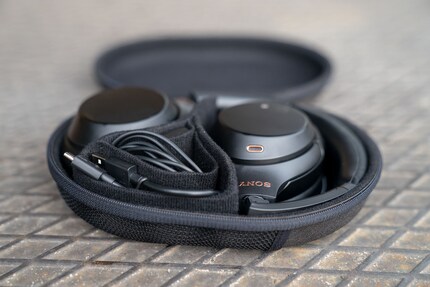
Anyone who has slept on a plane knows that it's a pretty miserable affair. Something is always pressing somehow and these weird neck pillows make it better, but not good. I didn't sleep well, but the headphones didn't make things any worse. They fit nice and snug on my head and even after hours I don't feel nauseous. Because that's one of the earlier features of noise cancelling. Until now, I've always resisted this feature because it always made me dizzy. With the WH-1000XM3, however, I can still walk straight after four hours and don't feel like I'm going to vomit.
So, that's it. I won't be giving my M3s away again and from now on they'll be standard equipment in my rucksack when I'm travelling.
Apropos: When I'm not travelling, I use the WH-1000XM3 in the office, connected to my work PC via a 3.5 mm jack. Noise cancelling in an open-plan office is a must these days, according to me.
This article was published on digitec.ch on 24.10.18
Journalist. Author. Hacker. A storyteller searching for boundaries, secrets and taboos – putting the world to paper. Not because I can but because I can’t not.



